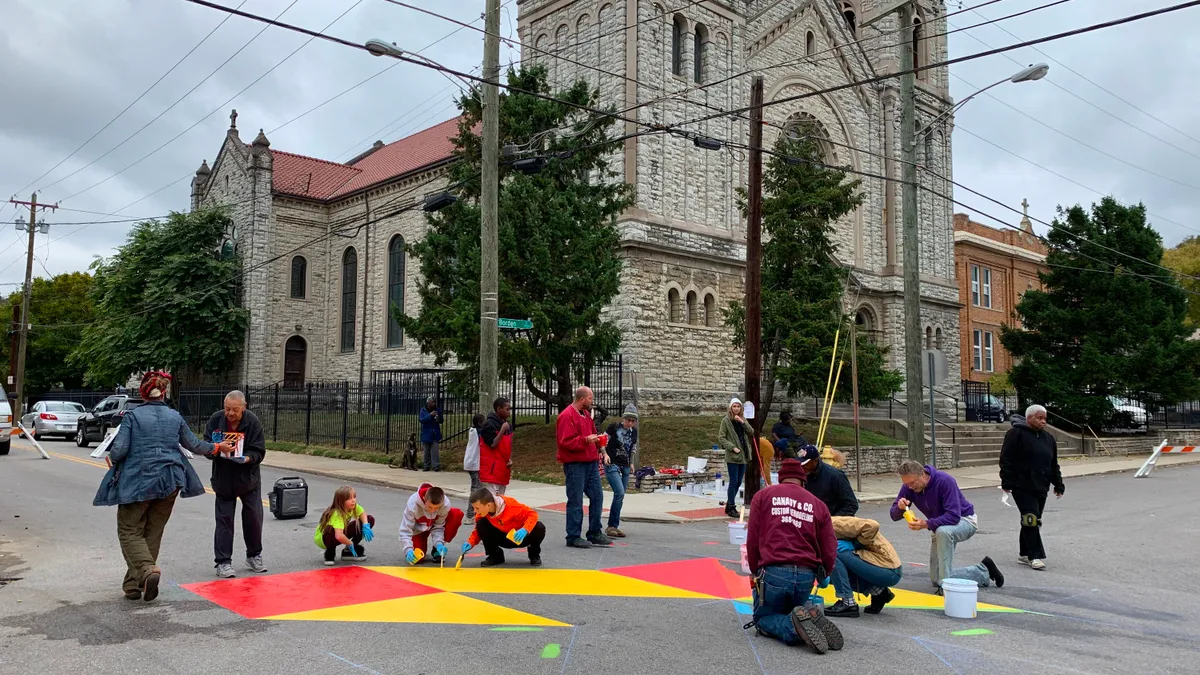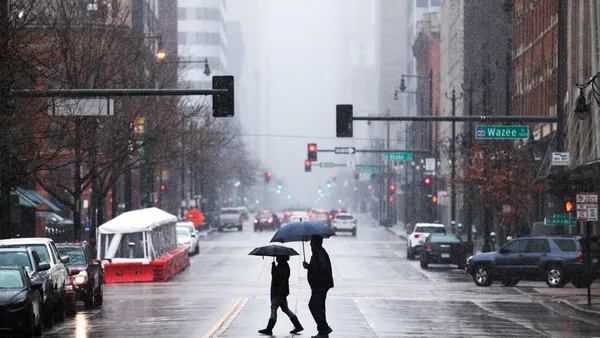Dive Brief:
- Cincinnati launched a program last week, Paint the Streets, which allows citizen groups to paint neighborhood street murals intended to calm traffic. It's one of the city's tools to improve pedestrian safety as part of its Vision Zero initiative.
- Community councils can apply for permits to paint the murals on lower-volume residential streets in the middle of intersections, mid-block or at curb bump-outs. The city will help to connect neighborhoods that can't fund a street art project on their own with potential sponsors.
- The street murals will not be in crosswalks and are not intended to serve as formal traffic control devices. They are intended to slow traffic by "establishing a sense of place that reminds drivers that they are driving in a residential area. These are places where people walk their dogs and where children play outside," a City of Cincinnati spokesperson told Smart Cities Dive via email.
Dive Insight:
Cincinnati is among a growing number of cities working to transform run-of-the-mill paved spaces into attractive spaces that build a sense community. As a side benefit, art on streets could help with traffic calming. Bloomberg Philanthropies just launched its Asphalt Art Initiative in response to the growing number of cities embracing this type of public art.
Cincinnati's program is a bit different from those in some other cities because it keeps the pavement art out of crosswalks, an area where many other cities have focused their efforts. Cincinnati emphasizes that the art projects are not traffic control devices. That's in line with city's recommendation earlier this year not to adopt 3D crosswalks because such art goes against the Federal Highway Administration's (FHWA) crosswalk guidelines.
Crosswalk art has become a bit controversial recently because of FHWA's guidance. The agency says any crosswalk paint other than the approved white stripes can cause a distraction to drivers that might cause them to make unsafe driving maneuvers. FHWA has taken action against some cities that installed creative crosswalks, such as Ames, IA, where the agency asked leaders to remove its new, colorful crosswalks. Still, some cities keep the non-traditional crosswalks and note that the colors and designs can draw drivers' attention to the space and prompt them to be more mindful of pedestrians.
Cincinnati's first Paint the Streets mural was installed last month in the center of an intersection. It cost about $500 and was fully funded by private donations. The community chose the location because of its proximity to a bus stop where many children regularly cross the street.











